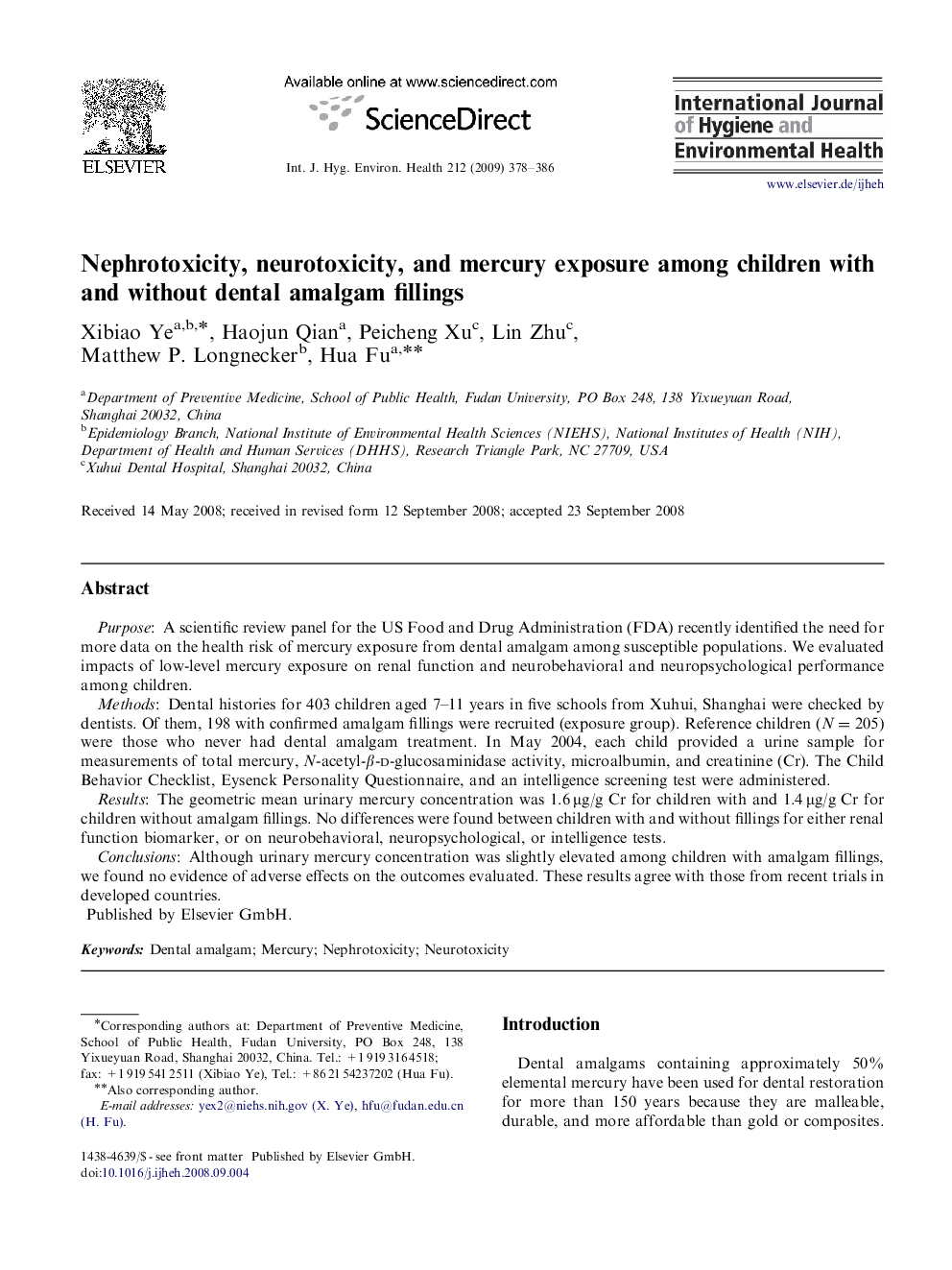| Article ID | Journal | Published Year | Pages | File Type |
|---|---|---|---|---|
| 2588742 | International Journal of Hygiene and Environmental Health | 2009 | 9 Pages |
PurposeA scientific review panel for the US Food and Drug Administration (FDA) recently identified the need for more data on the health risk of mercury exposure from dental amalgam among susceptible populations. We evaluated impacts of low-level mercury exposure on renal function and neurobehavioral and neuropsychological performance among children.MethodsDental histories for 403 children aged 7–11 years in five schools from Xuhui, Shanghai were checked by dentists. Of them, 198 with confirmed amalgam fillings were recruited (exposure group). Reference children (N=205) were those who never had dental amalgam treatment. In May 2004, each child provided a urine sample for measurements of total mercury, N-acetyl-β-d-glucosaminidase activity, microalbumin, and creatinine (Cr). The Child Behavior Checklist, Eysenck Personality Questionnaire, and an intelligence screening test were administered.ResultsThe geometric mean urinary mercury concentration was 1.6 μg/g Cr for children with and 1.4 μg/g Cr for children without amalgam fillings. No differences were found between children with and without fillings for either renal function biomarker, or on neurobehavioral, neuropsychological, or intelligence tests.ConclusionsAlthough urinary mercury concentration was slightly elevated among children with amalgam fillings, we found no evidence of adverse effects on the outcomes evaluated. These results agree with those from recent trials in developed countries.
